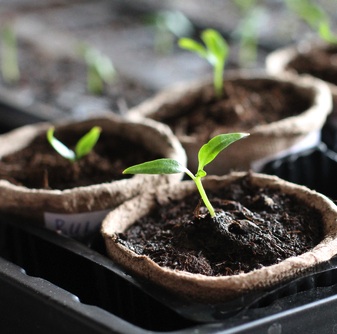As the weather begins to cool and Summer draws to a close, it’s time to begin planning and getting ready for your Autumn and winter planting. It’s too hot for much activity so February is a great time for planning and sowing the seed for later success.
Our resident small crops and market gardener Nic Zaccardi talks you through garden jobs to do in February…..
Now is the time to begin planting your brassicas (cabbage, broccoli, cauliflower etc), Asian greens, greens, beets, and snow peas to name a few. While it is still warm enough to get away with late plantings of beans, tomatoes, zucchinis, and pumpkins.
I begin all these vegetables in seed trays, as the consistency and quality will be far better, when compared to direct seeding. While things like your pumpkins, and beans especially, do just fine when direct seeded.
There is an art to growing seedlings and we will share some tricks to get the best from your seeds.
There are really three key things to be aware of when raising seedlings.
- Use high quality seeds
Obviously if you want to grow top quality produce, you need to start with top quality seeds. I started out using heirloom varieties, which certainly have their place, though their performance and yields could be variable. In the home garden, where your decisions don’t need to be commercially driven, heritage seeds are a wonderful option to ensure species diversity and its fine to overlook the variability.
As a commercial grower, I now tend to stick to hybrids or tried and true open pollinated varieties which have long term documented success. The hybrid vigor of Atomic (hybrid broccoli variety) is unmatched by any open pollinated/heirloom broccoli variety in yield and heat tolerance in Qld conditions.
- Use a premium potting mix
I don’t use any commercially available potting mix anymore as the results I got from using them were underwhelming. I have since developed my own mix, after much trial, and I am far happier with the results. I now grow incredibly healthy and strong seedlings, with excellent root systems, that burst with new growth once planted.
The recipe for my seed raising mix is below. All the ingredients can be purchased through Kandanga Farm Store. For the complete recipe including ratios, come in store and find out.
- Coco Pith Blocks – soaked in Soil Life microbes by Active Grow.
- Compost – I prefer to use Red Soil Organics Biodynamic compost
- Vermiculite/perlite
- Agrisilica chips
- Blood and Bone
- Soft Rock Phosphate
- Daily and weekly care of your seedlings
Generally, the seedling will stay in the tray for 4 – 6 weeks depending on what it is growing. These young plants are very hungry and require daily attention, to ensure they don’t dry out, and weekly applications of foliar fertiliser. These weekly foliar fertilisers include Eco Vital, mixed with Stimplex and a weekly application of Aminogro Maxi. Again, all these products can be purchase at the Farm Store. The Eco Vital is a fish hydrolysate, which is a fermented fish emulsion, where the Aminogro is a fermented crustacean emulsion. These are both a source of NPK, along with many other trace elements, but most importantly, they are growth stimulants, which will encourage healthier plants, with stronger root systems. Although similar, the Aminogro Maxi has a more diverse number of nutrients.
The stimplex is liquid seaweed, which again is a growth stimulate, and helps the plant cope with stresses including drought, heat, and frost to name a few. Traits which contribute to healthier, stronger plants.
Once the seedling can be comfortably removed from the tray with out damaging the plant, the seedlings are ready to go into the ground. Stay tuned next week/month to find out about pre-planting fertility and how to manage cover crops in your veggie garden.
